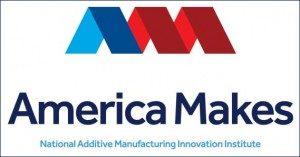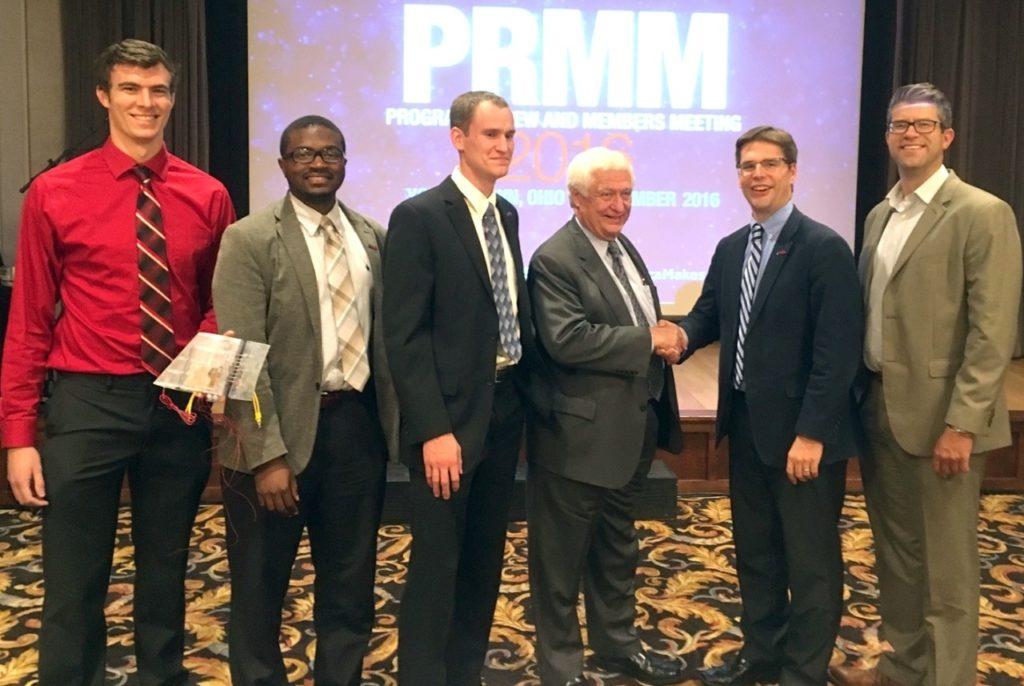 With the goal of working alongside startups and educational institutions to further the capabilities of 3D printing technology since 2012, America Makes, also known as the National Additive Manufacturing Innovation Institute, has become the bastion for additive manufacturing innovation in the United States. They’ve hosted a number of project calls focused on a wide range applications, from Air Force aircraft part replacement to open source 3D printing software. The 3D printing and additive manufacturing accelerator has helped constructed a community that enables the brightest startups and higher education to collaborate and drive this emerging technology forward.
With the goal of working alongside startups and educational institutions to further the capabilities of 3D printing technology since 2012, America Makes, also known as the National Additive Manufacturing Innovation Institute, has become the bastion for additive manufacturing innovation in the United States. They’ve hosted a number of project calls focused on a wide range applications, from Air Force aircraft part replacement to open source 3D printing software. The 3D printing and additive manufacturing accelerator has helped constructed a community that enables the brightest startups and higher education to collaborate and drive this emerging technology forward.
Their latest Innovation Sprint Smart Structures challenge, the first in a series of America Makes Innovation Sprint competitions, called on organizations to utilize 3D printing to produce smart structures. The winner of the challenge was a team of students from Virginia Tech’s Design, Research, and Education for Additive Manufacturing Systems (DREAMS) Lab, who developed a 3D printed wing section that demonstrates the possibility of fabricating parts with integrated sensing and actuation. The DREAMS Lab team consisted of undergraduate and graduate students from the College of Engineering’s Department of Mechanical Engineering, along with one electrical and computer engineer as well.

The DREAMS lab team with Ed Morris, the director of America Makes and vice president of the National Center for Defense Manufacturing and Machining. [Photo: Virginia Tech]
“Our goal is to use additive manufacturing to directly fabricate mechatronic devices – products that can both move, and have on-board sensing to detect and control that movement,” said Chris Williams, associate professor of mechanical engineering and DREAMS Lab director. “To demonstrate our progress toward this goal, we 3-D printed a multimaterial wing with a control surface – that is the flap of the wing – that is both adjusted and controlled by embedded actuators and sensors.”
 This 3D printed smart structure effectively eliminates the need for post-process assembly, simplifies the manufacturing process, and also protects the embedded sensors and circuits from environmental effects. In addition, since the wing is produced as a single part, the smart structure is inherently stronger than assembled products. The university has been researching the potential of embedding objects into multimaterial 3D printed products since 2011, but this was the first time they were able to utilize all of their work in one object. The team included mechanical engineering postdoc Donald Aduba; doctoral students Logan Sturm and Joseph Kubalak; and electrical and computer engineering senior Richard Dumene.
This 3D printed smart structure effectively eliminates the need for post-process assembly, simplifies the manufacturing process, and also protects the embedded sensors and circuits from environmental effects. In addition, since the wing is produced as a single part, the smart structure is inherently stronger than assembled products. The university has been researching the potential of embedding objects into multimaterial 3D printed products since 2011, but this was the first time they were able to utilize all of their work in one object. The team included mechanical engineering postdoc Donald Aduba; doctoral students Logan Sturm and Joseph Kubalak; and electrical and computer engineering senior Richard Dumene.
As a reward for their innovative work with 3D printed smart structures, America Makes has awarded Virginia Tech with silver-level membership to the institute for a year, which has a value worth $15,000. This means that the university’s faculty will now be eligible to compete in various America Makes project calls, and also utilize their extensive network to develop future collaborations and 3D printing projects. All in all, the DREAMS Lab’s submission for the Innovation Sprint Smart Structures challenge will help carry our current manufacturing technologies to the level needed for the intelligent products of the future. Discuss further in the Dreams Lab Wins 3D Printing Contest forum over at 3DPB.com.
[Source: Virginia Tech]Subscribe to Our Email Newsletter
Stay up-to-date on all the latest news from the 3D printing industry and receive information and offers from third party vendors.
You May Also Like
Printing Money Episode 18: The DC Fly-In with Mark Burnham, AddMfgCoalition
It’s only been a week since the previous show, but Printing Money is back already with Episode 18. Certain events call for Printing Money’s coverage, and the recent 2nd Annual...
3DPOD Episode 199: Collaborative Design with Graham Bredemeyer, CEO of CADchat
About a decade ago, entrepreneur Graham Bredemeyer started Collider, a company that combined the best of 3D printing with injection molding. Now he runs CADChat, which hopes to make sharing...
Printing Money Episode 17: Recent 3D Printing Deals, with Alex Kingsbury
Printing Money is back with Episode 17! Our host, NewCap Partners‘ Danny Piper, is joined by Alex Kingsbury for this episode, so you can prepare yourself for smart coverage laced...
3DPOD Episode 198: High Speed Sintering with Neil Hopkinson, VP of AM at Stratasys
Neil Hopkinson, a pioneering 3D printing researcher, played a pivotal role in developing a body of research that is widely utilized today. He also invented High Speed Sintering (HSS), also...

































